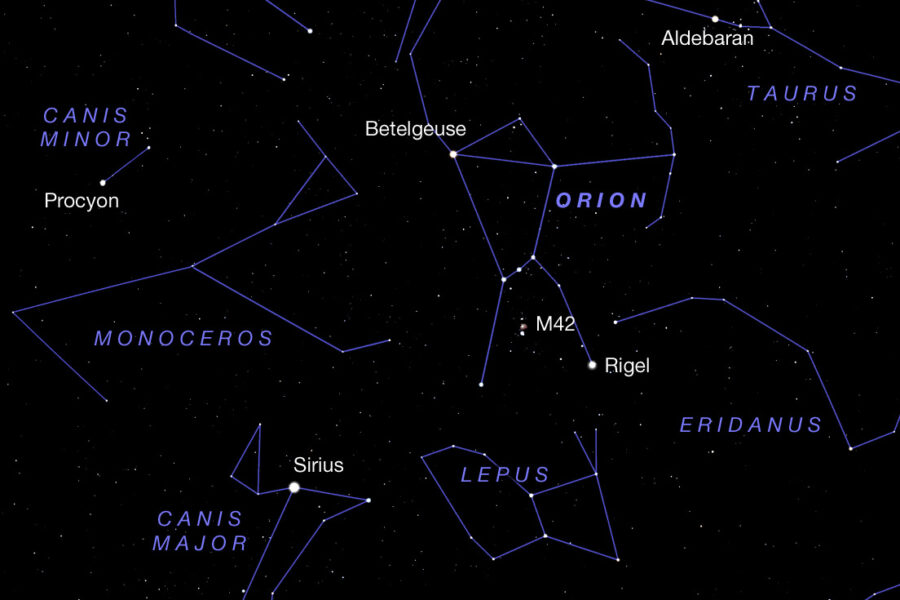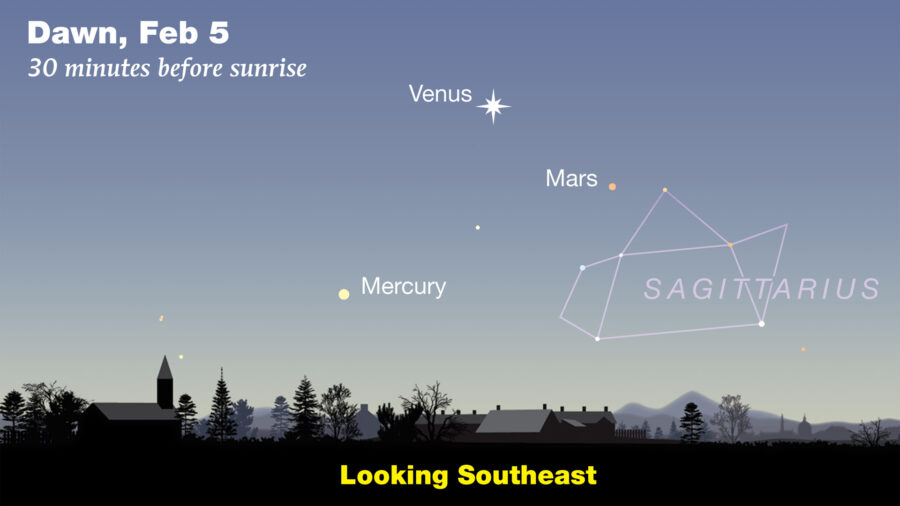Our monthly Sky Tour astronomy podcast provides an informative and entertaining 12-minute guided tour of the nighttime sky. Download February’s episode to explore the colorful constellations that surround Orion, the Hunter.

Listen Here:
Podcast: Play in new window | Download
Subscribe: Apple Podcasts | Google Podcasts | Spotify | Email | RSS | More
February is often the coldest month of the year for northerners, but the Sun is telling a different story. You can already notice that the days are getting longer, with earlier sunrises and later sunsets. The celestial geometry is changing too, as the Sun is starting to slide farther north in the sky. In just weeks we’ll be on the threshold of northern spring.
But the stars of winter are still firmly in control of the nighttime firmament. Our monthly Sky Tour astronomy podcast helps you track down some of them down.

Stellarium
The night sky’s most dazzling star is Sirius, down near the southeastern horizon as darkness falls. Above Sirius is the distinctive pattern of Orion, the Hunter, the quintessential constellation of northern winter — or of summer if you live in Australia. Three stars in a tight diagonal row mark his belt, surrounded by a tall boxy quartet of bright stars to frame his torso. To the belt’s upper left is the red supergiant star Betelgeuse, which marks Orion’s left shoulder.
As you look around this part of the sky, you’ll notice many bright stars. Skygazers often trace out an enormous six-sided pattern, called the Winter Hexagon, that connects them. To find it, imagine Betelgeuse in the hexagon’s middle. Arrayed around Betelgeuse you’ll be able to trace out a huge polygon created by a half dozen bright stars. Which stars, you might ask? Listen to this month’s Sky Tour to find out!
Orion also dominates a region of the sky with several lesser-known constellations, some of which might serve as the mythical Hunter’s prey. There’s a long, winding river to his west and a unicorn to his east. A celestial hare is hiding in plain view under his legs, and below that is a dove with ties to the Bible. Sky Tour makes it easy to find these constellations.

Sky & Telescope
February’s nights might be cold (even frigid), but at this time of year the sky is alive with bright stars and impressive constellations. During mid-February you can even see three inner planets huddled together low in the southeast before dawn.
So download or listen to this month’s Sky Tour podcast — a fun and informative way to learn what stars and planets await you throughout February.
 0
0
Comments
You must be logged in to post a comment.